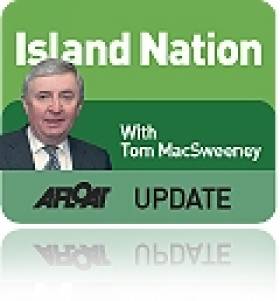Displaying items by tag: Government
Will Sail Training Be Restored?
I am glad to see that efforts are being made to restore the national sail training programme, but less sanguine about reposing any confidence in the present Government to give practical assistance.
I talked a few weeks ago with the Irish Sailing Association's Chief Executive about their involvement in moves to establish a new sail training organisation to replace Coiste an Asgard, which the Government abandoned. Harry Hermon told me that the ISA had been examining the possibilities of what could be done. They were providing a forum which has now led to the setting-up of a steering group aimed at establishing a new organisation, Sail Training Ireland.
Sail Training International which organises the Tall Ships Races has given support. The Tall Ships Race will start from Waterford Port next year and is due into Dublin in 2012.
Nigel Rowe, Chairman of the international body, has expressed confidence that the current moves will result in a plan to continue sail training in Ireland. Sail Training International has awarded a bursary to the emerging Irish organisation, providing financial support for young Irish sailors in the 2011 and 2012 races.
The ISA working group says it will make a formal launch of its plans in the next few weeks. At present it is putting together a feasibility study and a business plan which will be presented to the Government in the New Year.
While the ISA move is welcome, I wonder about the value of presenting a plan to the existing Government which destroyed sail training, abandoned Asgard II on the seabed off France and used the insurance compensation money for purposes other than sail training.
I understand that other groups, who may differ with the ISA approach, have been planning their own moves in sail training and that the ISA decided to establish its position in public first.
It also has to be noted that there was criticism of the former Coiste an Asgard committee which did not make any moves in public to oppose the Government closure, on financial grounds, of the sail training programme.
It would be regrettable if differences delayed positive developments, but a united approach, involving the widest possible support to the restoration of sail training would be best.
• This article is reprinted by permission of the EVENING ECHO newspaper, Cork, where Tom MacSweeney writes maritime columns twice weekly. Evening Echo website: www.eecho.ie
An Irish Maritime Foundation
I wonder whether there might be interest in forming an Irish Maritime Foundation?
I raise the question having discussed the possibility with those who run the UK Maritime Foundation and whose views about the sea about the sea impressed me when I met them in London. The Foundation traces its history back to 1981 when shipowners, senior retired naval officers and people involved in the financial industry reacted to changes in British Government policy that were regarded as failing to protect the importance of the UK maritime industry. It is a registered charity with the purpose of promoting and raising interest in the maritime sector amongst the public, the media and Parliament. To do so it is involved in assisting development of maritime education, training and research.
The British are a magnanimous people in my view. It was an honour to accept the Desmond Wettern Award from the Foundation. Desmond Wettern was a distinguished UK maritime journalist for over 30 years and the awards were established in his name. This year the Society for Nautical Research joined the awards project.
In responding I used one of my favourite descriptions - "the Family of the Sea," which I have used on radio. It drew a lot of interest from those present. I believe there is a "family of the sea" which spans oceans and seas, linking those who appreciate the sea as essential to human survival.
"Everyone who has an interest in the sea would recognise that there are and will continue to be, increasing pressures on its use and on the exploitation of its finite resources, but also a number of opportunities," according to Rear Admiral Christopher Perry, Chairman of the UK Marine Management Organisation. Those views and others I discussed with some of those amongst the 200 attending the function, who came from various parts of the world. Professor Richard Harding of the Society for Nautical Research which is marking its centenary, expressed this opinion: "There is a disturbing sense of sea-blindness in the British Government, amongst the general public at large and in the media."
There is certainly sea-blindness in our Government and in much of the media, though I am hopeful that there is growing awareness of the importance of the marine sector amongst the general public. If Ireland had an organisation like the Maritime Foundation, I would be very pleased.
• This article is reprinted by permission of the EVENING ECHO newspaper, Cork, where Tom MacSweeney writes maritime columns twice weekly. Evening Echo website: www.eecho.ie
























































